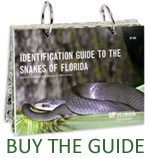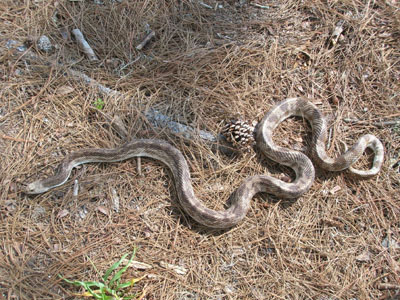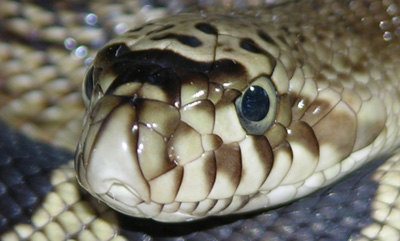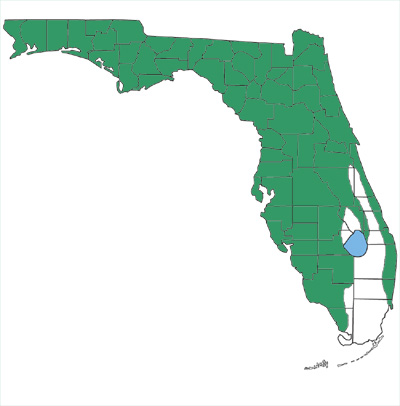Florida's Snakes

Pinesnake
(Pituophis melanoleucus)NON-VENOMOUS

Blotched
Pinesnake


Photos by Melissa Friedman (UF, upper photo) and Dr. Steve A. Johnson (UF, close up photo). These photos may not be used without the express written permission of the photographer.
Size:
Usually 3–5 ft. (max. 7.5 ft.)
Identification:
Body is white, light tan, or grayish. Back and sides are marked with irregular brown, rust, or gray blotches. Blotches are most obvious in juveniles; with age, blotches toward the head become obscured by spots of dark pigment. In the extreme western panhandle, this snake may be solid black. Scales have faint lengthwise ridges (keels); scale at the tip of the snout is large and triangular (see close up photo). This snake lays eggs.
Habitats:
Found throughout most of Florida (except some southeastern regions) in dry habitats with sandy, well-drained soils. It is most common in open, fire-maintained pine-oak forests and old agricultural fields but is also found in sandhills and scrubs. It spends most of its time in burrows of tortoises, gophers, or other burrowing mammals.
Diet:
Lizards, birds (and their eggs), moles, mice, rats, rabbits, squirrels, gophers
Map by Monica E. McGarrity - may be used freely for education.
